After sitting at work and staring at our computer screens for long hours, our eyes will send out warning signals. We typically push through the signals that our eyes need a break. If you feel pain, itchiness, redness, or blurry vision, then you are experiencing dry eye symptoms. Usually at these times, we rub our eyes frantically, but that further irritates our eyes and worsens our conditions. Before we introduce ways to ease dry eye symptoms, we must first understand why dry eyes occur and what causes the symptoms we feel.
Our eyes feel dry when there is an imbalance in our tear systems. Our eyes obtain their moisture from tears, which provides us with clear vision. Tears are a combination of water, oils, mucus, antibodies and special proteins. All of these elements work together to provide us with protection against dry eyes symptoms. There are two types of dry eyes. Aqueous tear-deficiency is when your glands don’t create enough water for your tears to maintain enough moisture for your eyes. Another type of dry eyes is evaporative dry eyes, which may result from inflamed glands in your eyelids. The surface around our eyes can also be affected and cause us to feel symptoms of dry eyes as well.
Dry eyes are typically more common among the elderly, especially women after menopause. But, drugs like birth control pills and allergy pills (antihistamines) may also have side effects that can cause dry eyes. Dry eyes can also simply be caused by too much strain, such as staring at computer or TV screens for too long. without breaks.
The good news is that there are many treatments to ease your dry eye symptoms. The most common way is using eye-drops that help to lubricate your eyes. There are prescription medicines available that can treat chronic dry eyes by helping your eyes increase tear production. For overnight treatments, you can switch to thicker ointments.
Another simple solution to ease dry eyes is through non-prescription medications and tweaking our nutrition intakes. Supplements or diets involving fish oil and omega-3 have proven to be very helpful in various cases. If these simple ways don’t make a difference, you can also consider temporary punctal occlusions, which temporarily closes the ducts in the eye that are used for draining tears. If they are helpful, then you can receive a small surgery —punctal actuary — that permanently closes the ducts. If surgery isn’t something you want, lipiflow, a medical device, can unclog your blocked glands for producing oils through heat and pressure.
If you’re looking for a solution to your dry eyes problem, book an appointment with an Optometrist in Vaughan like Dr. Brian Abrams. We will recommend the best treatment for your condition, and use our expertise to relieve you of your dry eye problems. If you have more questions regarding dry eyes, or if you want to book a treatment appointment, you can reach us at (905) 850-2400, or by email at info@drbrianabrams.com.


